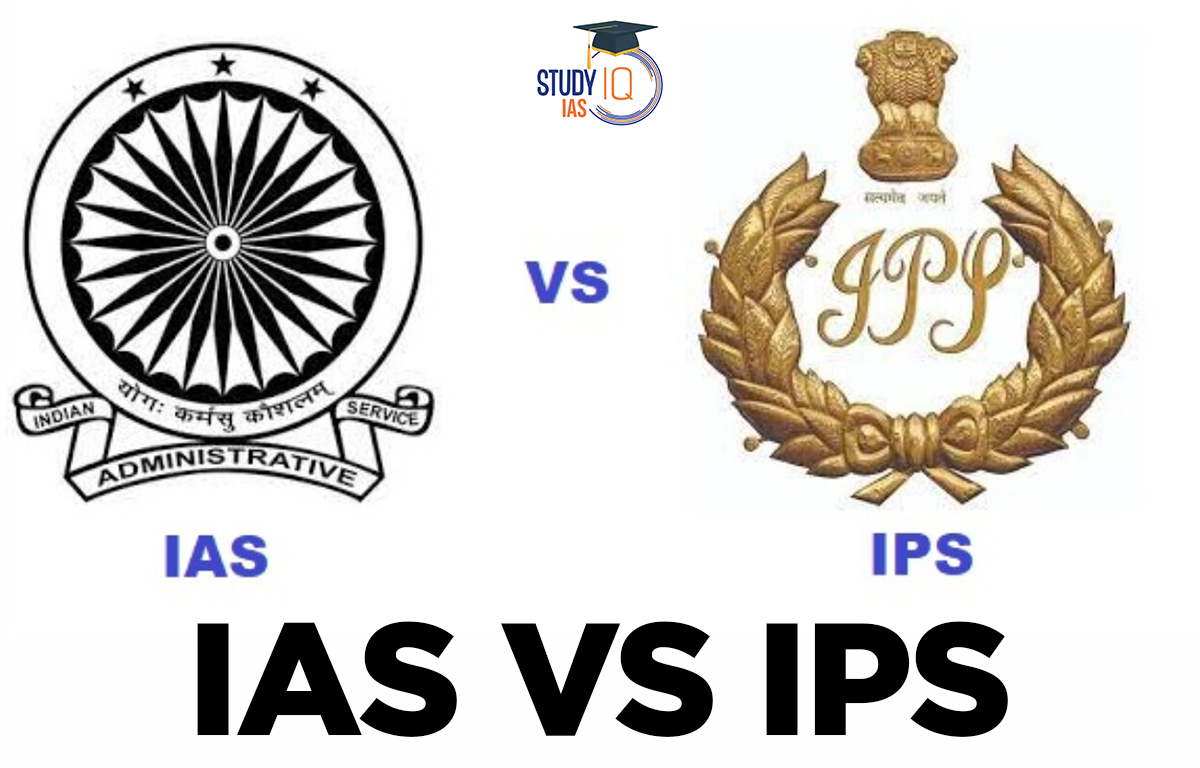Table of Contents
The Indian Administrative Service (IAS) and the Indian Police Service (IPS) are among the most prestigious and demanding positions within the Indian civil services. Both roles are integral to the country’s governance and law enforcement but come with distinct responsibilities and focus areas.
IAS: Indian Administrative Service
The IAS, one of the highest All India Services established before India’s independence, is central to the country’s administrative machinery. To join the IAS, candidates must successfully navigate the UPSC Civil Services Examination conducted annually by the Union Public Service Commission (UPSC). The IAS is considered the pinnacle of administrative careers in India and is highly esteemed among aspiring professionals.
Key Responsibilities of IAS Officers
- Policy Formulation and Implementation: IAS officers are instrumental in creating and executing government policies and programs.
- Administrative Governance: They oversee the administrative functioning of various government departments and ensure the smooth implementation of laws and regulations.
- Supervision and Coordination: IAS officers are responsible for coordinating between different government agencies and departments to achieve policy goals.
Eligibility Criteria
- Educational Qualification: A Bachelor’s degree from a recognized institution is required.
- Selection Process: Candidates must achieve a high rank in the UPSC Civil Services Examination.
IPS: Indian Police Service
The IPS is renowned for its challenging and dynamic nature, focusing on law enforcement and public safety. To become an IPS officer, candidates must also clear the UPSC Civil Services Examination. The IPS plays a crucial role in maintaining law and order, investigating crimes, and ensuring public safety.
Key Responsibilities of IPS Officers
- Law Enforcement: IPS officers are tasked with enforcing laws and maintaining public order.
- Crime Investigation: They lead investigations into criminal activities and work to prevent and solve crimes.
- Public Safety: Ensuring the safety and security of the public is a primary responsibility of IPS officers.
Eligibility Criteria
- Educational Qualification: A Bachelor’s degree from an accredited university in any discipline is required.
- Selection Process: Aspirants must pass the Civil Services Examination and secure a suitable rank to qualify for the IPS.
Difference Between IAS and IPS
| Aspect | IAS (Indian Administrative Service) | IPS (Indian Police Service) |
| Roles and Responsibilities | Administrative governance, policy formulation, public service delivery | Law enforcement, maintaining law and order, crime prevention |
| Hierarchy and Ranks | Assistant Collector to Cabinet Secretary | Assistant Superintendent of Police to Director General |
| Training | Lal Bahadur Shastri National Academy of Administration | Sardar Vallabhbhai Patel National Police Academy |
| Nature of Work | Policy matters, developmental projects, administration | Crime prevention, law enforcement, public safety |
| Uniform | No uniform; formal business attire | Distinctive police uniform |
| Transfers and Postings | Diverse administrative roles and departments | Law enforcement and police-related assignments |
Difference Between IAS and IPS Rank wise
| Ranks of IAS Officers | IPS Officer Ranks |
| Assistant Collector | Assistant Superintendent of Police (ASP) |
| Additional Collector | Additional Superintendent of Police (Addl. SP) |
| Deputy Collector | Deputy Superintendent of Police (DSP) |
| Collector / District Magistrate | Superintendent of Police (SP) |
| Additional Secretary | Additional Deputy Commissioner of Police |
| Joint Secretary | Deputy Commissioner of Police (DCP) |
| Special Secretary | Additional Commissioner of Police (Addl. CP) |
| Secretary | Joint Commissioner of Police (Joint CP) |
| Principal Secretary | Inspector General of Police (IGP) |
| Chief Secretary | Additional Director General of Police (Addl. DGP) |
| Cabinet Secretary | Director General of Police (DGP) |
IAS VS IPS Salary
IAS Salary
- Range: ₹56,100 to ₹2,50,000 per month
- Details: The salary of IAS officers has seen significant increases following the recommendations of the 7th Pay Commission. Salaries vary based on seniority, with higher ranks commanding higher pay.
IPS Salary
- Range: ₹56,100 to ₹2,25,000 per month
- Details: Similar to IAS, IPS officers also benefit from the 7th Pay Commission’s salary revisions. Their pay scales also depend on their rank and years of service, though generally, IAS officers receive a higher salary compared to their IPS counterparts.
Which is the Higher Post: IAS or IPS?
IAS
- Highest Post: Cabinet Secretary of India
- Other Notable Positions: Chief Secretary of State Governments, Union Home Secretary
IPS
- Highest Post: Director-General of Police (DGP) at the state level
- Other Notable Positions: Director of CBI, IB, RAW, National Security Adviser
While the IAS is generally considered higher in terms of administrative authority and career progression, the IPS holds significant roles in law enforcement and national security.
Recruitment and Preference
The UPSC Civil Services Examination is the gateway to both IAS and IPS positions. The IAS is often considered more prestigious, leading many candidates to list it as their top preference and IPS as their second. After clearing the UPSC exam, candidates fill out their Detailed Application Form (DAF), and the Department of Personnel and Training assigns them to either IAS or IPS based on their rank and preferences.
Cadre Controlling Authority
IAS
- Authority: Ministry of Personnel
- Overview: The IAS is controlled by the Ministry of Personnel, which reports directly to the Prime Minister.
IPS
- Authority: Ministry of Home Affairs
- Overview: The IPS is managed by the Ministry of Home Affairs, under the Union Home Minister.
Training and Development
IAS Training
- Institute: Lal Bahadur Shastri National Academy of Administration (LBSNAA)
- Duration: 2 years
- Focus: Management, administration, and coordination of resources.
IPS Training
- Institute: Sardar Vallabhbhai Patel National Police Academy (SVPNPA)
- Duration: 2.5 years
- Focus: Law enforcement, physical training, and field exercises.
The IAS training is oriented towards administrative management, while IPS training emphasizes law enforcement skills and physical fitness.
Power and Responsibilities
IAS
- Role: District Magistrate (DM)
- Responsibilities: Overseeing district administration, coordinating various departments, and implementing government policies. The DM holds significant decision-making power at the district level.
IPS
- Role: Senior Superintendent of Police (SSP)
- Responsibilities: Maintaining law and order, leading police operations, and ensuring public safety. The SSP focuses on law enforcement and needs IAS consent for certain decisions.
Uniform and Public Perception
IAS
- Uniform: No specific uniform; formal attire for official events.
- Recognition: IAS officers are typically recognized by their role and position rather than a uniform.
IPS
- Uniform: Prescribed police uniform with rank insignia.
- Recognition: IPS officers are easily identifiable by their uniform, which includes the Ashok symbol on their shoulders.


 UPSC CAPF Interview 2024 Dates Out: Chec...
UPSC CAPF Interview 2024 Dates Out: Chec...
 UPSC Notification 2025: Download PDF, IA...
UPSC Notification 2025: Download PDF, IA...
 CDS Syllabus 2025, Download Subject Wise...
CDS Syllabus 2025, Download Subject Wise...





















